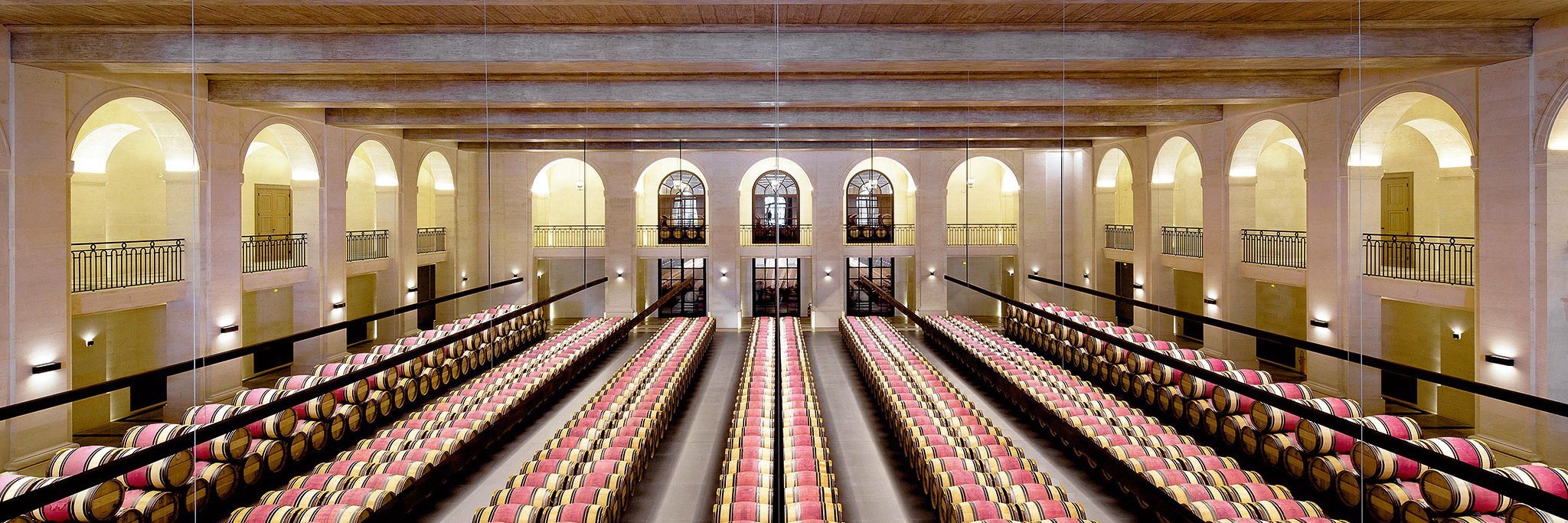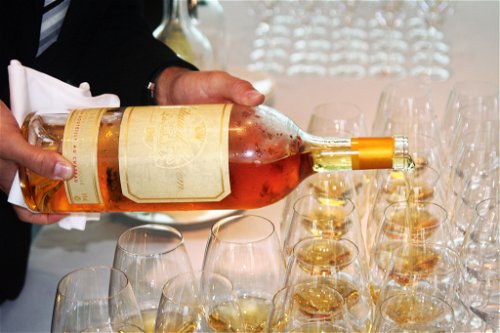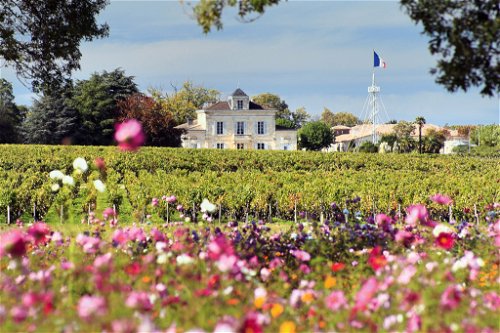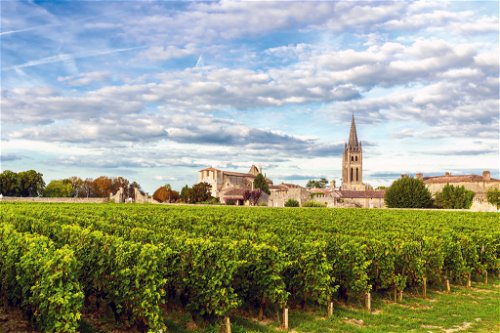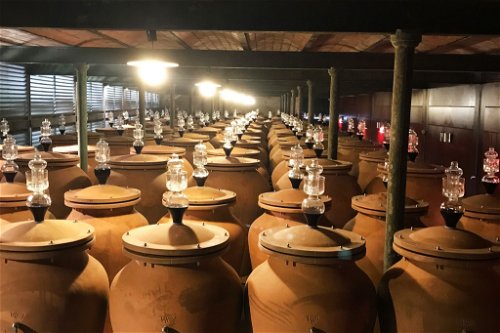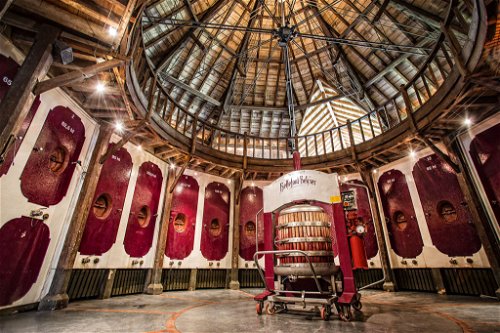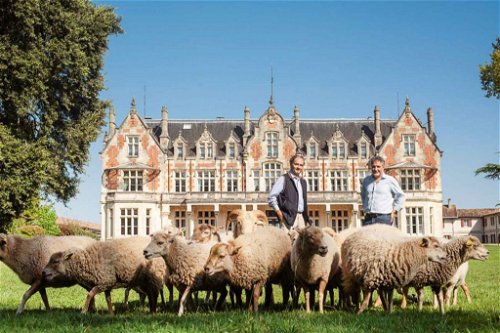Bordeaux Arrivage: How good is the 2021 vintage?
In spring 2024, most of the wines from the 2021 Bordeaux vintage will hit the shelves of wine merchants. Falstaff has tasted the Grands Vins and second wines of the classified growths from Médoc, Pessac-Léognan and Sauternes in their bottled state and re-evaluated them.
The year 2021 did not seamlessly join the series of top years in Bordeaux, as 2020 and 2022 did. It was even capable of making the winegrowers in the Gironde sweat. It was plus 25 degrees at the beginning of April, followed by a shock: several nights of late frost were the overture, followed by a lot of rain and little sun during flowering in June and July, and finally a long period of drought.
The harvest started late - at the end of September for Merlot, Cabernet Sauvignon started a week later - all in compliance with the Covid protection measures. Indian summer saved the day for those who could afford to be patient.
It was a year of winemakers and of course also a question of terroir. This assessment was also clearly confirmed during the most recent tastings of the full-bodied wines of the vintage. In terms of quality, 2021 cannot keep up with 2018, 2019 and 2020, let alone 2022, but 2017 will be surpassed. Nevertheless, it is a good year with light-footed, balanced and, above all, easily accessible wines that will help bridge the gap until the really great vintages are ready.
Accessible results
The harvest conditions were good. The Cabernet Sauvignons arrived ripe in the cellar, the classified wines on the left bank, which were the subject of the first, large arrivage samples, are fresh and balanced, the red wines have round tannins, fine fruit nuances, astonishing acid freshness and comparatively low alcohol levels. The majority of the wines are surprisingly accessible, harmonious and lively, with little standing in the way of early enjoyment. At the moment, the wines from the north, such as those from Saint-Estèphe and in some cases Pauillac, are still somewhat more reserved. In Saint-Julien, they were already much more open and easy to drink in the Margaux appellation. The red wines in Pessac-Léognan, which are homogeneous and finely spiced, are very successful. However, the wines also have quite good development potential, so you don't have to worry if you want to leave some bottles for ten or twenty years. In short, the majority of the wines can be enjoyed immediately upon delivery.
Second wines? Rather not.
A little more caution is required this time with the second wines, although this comment does not apply to all wineries to the same extent. In general, the wineries did a very good job in this vintage, they rigorously selected those barrels that did not correspond to the Grand Vin. It was precisely for this reason that second wines were invented, and wherever this was taken to heart, you could see it in the top full-bodied wines. Conversely, however, this means that the second wines are often somewhat simpler than in years with excellent starting material.
The exceptions are those "second wines", which are actually more of a second wine from the leading wineries. Of the wines now tasted, the second wines from Château Lafite-Rothschild, Haut-Brion, Margaux and Latour were the best rated with 93 points, but these are generally wines from their own parcels or young vineyards, which are vinified separately and only contain a small number of selection wines. If it has to be a second wine in red, then the Réserve de Comtesse 2021 is best, the second wine from Pichon-Comtesse, which you can still get hold of for less than 50 euros. Exceptions to this are some successful white wines such as Le Petit Smith Haut Lafitte Blanc or La Croix de Carbonnieux from the Pessac-Léognan, the latter of which can be found for around 25 euros.
The frost had a very strong impact on the harvest volume of sweet wines, with some wineries losing up to 100 percent of their harvest in the early phase from April 6 to 8. After 1961 and 1991, this special constellation also occurred in 2021 - always 30 years later. The farms with the best sites, on the other hand, were able to bring in up to half of a normal harvest, while the few sweet wines are of very high quality. However, of the 27 sweet wine estates in Sauternes and Barsac classified in 1855 - their vineyards cover around 50 percent of the entire appellation - only 14 will be bringing a sweet Grand Vin onto the market this time, which makes this sweet vintage a rarity in itself. Château d'Yquem is once again in a class of its own, as are Rieussec and Suduiraut and the unclassified de Fargues.
The representatives of the growing number of dry white wines from Sauternes, which is likely to increase in the future due to the lack of demand for sweet wines on the one hand and climate change on the other, were not really enthusiastic. The result for the white wines from Pessac-Léognan, for which the conditions in 2021 were clearly very favorable, was quite different. The dry whites from the Haut-Brion family are tops, the excellent Smith Haut-Lafitte is absolutely on a par here, the white Domaine de Chevalier competes with the La Mission Haut-Brion Blanc.
White Médoc
More and more classified wineries on the left bank are also producing white wines - in smaller quantities. Among them are some particularly good examples from the 2021 vintage. Of course, these rarities from the Médoc are not exactly bargains, but their individual quality is hard to argue with.
Mouton-Rothschild's Aile d'Argent from Sauvignon Blanc, Sémillon and Sauvignon Gris is delicious, for example, while Château Margaux's Pavillon Blanc from pure Sauvignon Blanc is precise and fine, and the Cos d'Estournel Blanc (more than two thirds Sauvignon Blanc, the rest Sémillon) is smoky and mineral. The brand new Le Blanc de Duhart-Milon from the Lafite group is composed of 82 percent Sémillon, 17 percent Sauvignon Blanc and one percent Sauvignon Gros. The ultra-rare Vin Blanc de Palmer, on the other hand, is a cuvée of Muscadelle, Sauvignon Gris and the ancient Loset variety. These wines from the 2021 vintage are well worth a try.
Conclusion: Although the 2021 vintage En Primeur felt a little too expensive for some wines, we now know better and can buy what we think is appropriate when the wines arrive on the market. And the wines are always fun with their freshness.
Don't miss out!
Sign up now for our newsletter.
